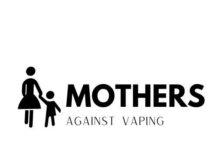By Dr. Vidyasagar Ramappa, Consultant –Gastroenterology, Columbia Asia Referral Hospital Yeshwanthpur
Hepatitis B is an infection caused by a virus that has the potential to cause severe damage to the liver. Babies born to a mother with hepatitis B have a greater than 90% chance of developing chronic hepatitis B if they are not properly treated at birth. Pregnant women with Hepatitis B infection can transmit the infection to child (vertical transmission) during delivery. There is greater than 90% chance of developing of chronic Hepatitis B infection in infants born to such women.
If your doctor is aware that you have Hepatitis B, he or she can make arrangements to have proper medications in the delivery room to prevent your baby from being infected. Therefore, it is imperative to know the hepatitis B status of all pregnant women.
Pregnant women should be screened for Hepatitis B infection in their first trimester, especially for the women who fall under the high- risk category like health care workers, living with an infected spouse or also women who come from ethnic communities where the infection is very common.
Screening early in pregnancy would allow the doctor to assess the risk to the mother and infant and provides time for appropriate measures to be taken during pregnancy to reduce the risk of transmission of virus to the infant. This involves starting the pregnant women on medications to reduce the viral load and also vaccinate the newborn infant in the delivery room with Hepatitis B vaccine and Hepatitis B Immune Globulin (HBIG).
Treatment during Pregnancy
Hepatitis B infection should not cause any problems for you or your unborn baby during your pregnancy. It is important for your doctor to be aware of your hepatitis B infection so that he or she can monitor your health and so your baby can be protected from an infection after it is born.
All women who are diagnosed with hepatitis B in pregnancy should be referred for follow up care with a physician skilled at managing hepatitis B infection.
A virus level greater than 2,00,000 IU/mL indicates a level where the combination of the birth dose of the vaccine and HBIG may fail. In such instances antiviral therapy with tenofovir may be recommended. Antiviral treatment begins at 28-32 weeks of gestation and continues 3 months post-delivery.
Treatment after Pregnancy
If you are prescribed antiviral treatment during pregnancy, you should have your ALT (SGPT) monitored every 3 months for 6 months, following the discontinuation of antiviral treatment. This will help determine if you should continue antiviral treatment.
For most women whose follow up testing shows no signs of active disease, your physician will recommend regular monitoring with a liver specialist.
Breastfeeding
All women with hepatitis B should be encouraged to breastfeed their newborns.The benefits of breastfeeding outweigh any potential risk of infection. Since it is recommended that all infants be vaccinated against hepatitis B at birth, any potential risk is further reduced.
For women taking antiviral treatment, there is sufficient data to support the safety of antiviral therapy with Tenofovir during breastfeeding.
Protecting your baby through vaccination
Infants born to hepatitis B-positive women must receive the accurate doses of HBV vaccine and HBIG to ensure complete protection. In order to protect these infants, both medications should be given immediately after birth in the delivery room or within the first 12 hours of life. Subsequent HBV vaccine doses are administered at ages of 1-2 months and 6 months. All doses must be completed in order for your infant to be fully protected against hepatitis B. It is also important that a baby born to an HBV-positive mother receive post-vaccination testing at age 9-12 months to confirm the baby is protected against HBV and is not infected. Tests include the HBsAg and anti-HBs titer test.
How is Hepatitis B spread?
The hepatitis B virus is transmitted through blood and body fluids. This can most commonly occur in the following ways:
- Direct contact with infected blood
- Unprotected sex with an infected partner
- Use of illegal or “street” drugs
- Needles that are contaminated or not sterile
- From an infected woman to her newborn during pregnancy and childbirth
- Body piercing, tattooing, acupuncture are other potential routes of infection unless sterile needles and equipment are used.
- In addition, sharing personal items with an infected person such as razors, toothbrushes, nail clippers, earrings and body jewelry can be a source of infection.
Hepatitis B is NOT transmitted casually. It cannot be spread through toilet seats, doorknobs, sneezing, coughing, hugging or eating meals with someone who is infected with hepatitis B.
Measures to prevent from Hepatitis B
Hepatitis B is a vaccine-preventable disease. HBV vaccine is considered to be very safe and effective vaccine to protect infants, children and adults from hepatitis B
All sexual partners, family and close household members living with a chronically infected person should be tested and vaccinated. It is important to remember that hepatitis B is not spread by coughing, sneezing, hugging, cooking and sharing food. It is spread through direct contact with infected blood and bodily fluids.
In addition to vaccination, there are other simple ways to help stop the spread of hepatitis B:
- Washing exposed area thoroughly with soap and water after any potential exposure to infected blood and body fluids
- Use condoms with infected sexual partners
- Avoid direct contact with blood and body fluids
- Cover all cuts carefully
- Avoid sharing sharp items such as razors, nail clippers, toothbrushes, and earrings or body rings
- Avoid illegal street drugs (injecting, inhaling, snorting, or popping pills)
- Make sure new, sterile needles are used for ear or body piercing, tattoos, and acupuncture
What are the risks of not getting the vaccine?
An unvaccinated person is at risk of contracting the virus through contact with infected blood or body fluids. Such individuals who are chronically infected may not have symptoms, but their liver is still being silently damaged which can develop into serious liver disease such as cirrhosis or liver cancer. A timely “post exposure prophylaxis” (PEP) can prevent an infection and subsequent development of a chronic infection or serious liver disease.
Corporate Comm India (CCI Newswire)























